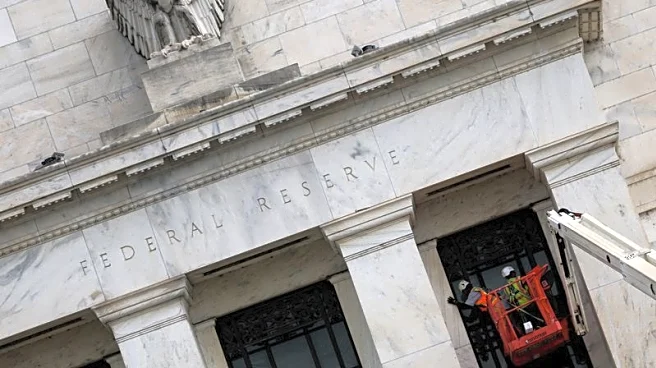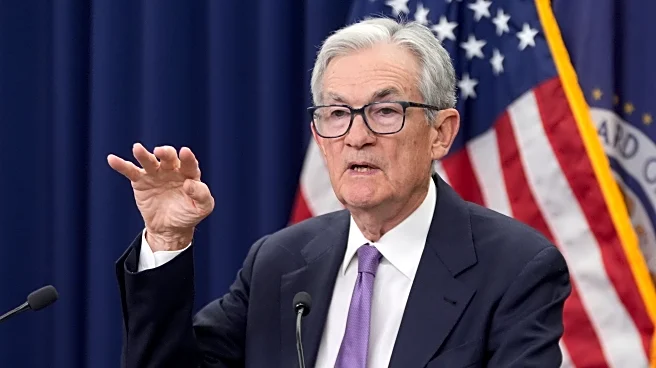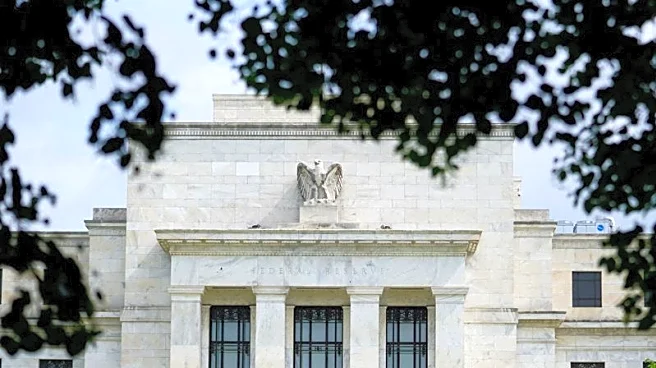What's Happening?
The Federal Reserve has reduced its benchmark interest rate by 0.25 percentage points, bringing the federal funds rate to a range of 3.75% to 4%. This marks the second consecutive rate cut following a similar
reduction in September. The decision comes amid concerns over a weakening labor market, as indicated by recent private-sector payroll data showing a decline. Federal Reserve Chair Jerome Powell has suggested that further rate cuts are not guaranteed, despite previous expectations of additional reductions. The move aims to lower borrowing costs and stimulate economic growth, although conflicting views within the Federal Open Market Committee (FOMC) have emerged regarding future policy directions.
Why It's Important?
The rate cut is significant as it reflects the Federal Reserve's response to economic indicators suggesting a slowdown in hiring and potential risks to employment. By lowering interest rates, the Fed aims to encourage consumer spending and business investment, which could help mitigate the effects of a sluggish labor market. However, the decision also highlights the challenges faced by the Fed in balancing its dual mandate of controlling inflation and maximizing employment. The uncertainty surrounding future rate cuts may impact investor confidence and market stability, as evidenced by fluctuations in stock indices following Powell's comments.
What's Next?
The Federal Reserve's next meeting is scheduled for December 10, where further rate cuts will be considered. The ongoing government shutdown has complicated the Fed's decision-making process by limiting access to official economic data, which is crucial for assessing the state of the economy. As the Fed navigates these challenges, stakeholders such as businesses and investors will closely monitor developments to gauge potential impacts on economic growth and inflation. The Fed's approach to monetary policy will continue to be influenced by evolving economic conditions and the availability of reliable data.
Beyond the Headlines
The Fed's decision to cut rates amid a government shutdown raises questions about the reliability of alternative data sources and the potential long-term effects on monetary policy. The lack of official economic data may lead to increased reliance on private-sector reports, which could introduce biases or inaccuracies. Additionally, the Fed's focus on stimulating the labor market may overshadow concerns about inflation, particularly in light of tariff-induced price increases. As the Fed seeks to balance these competing priorities, its actions may have broader implications for economic stability and policy effectiveness.













